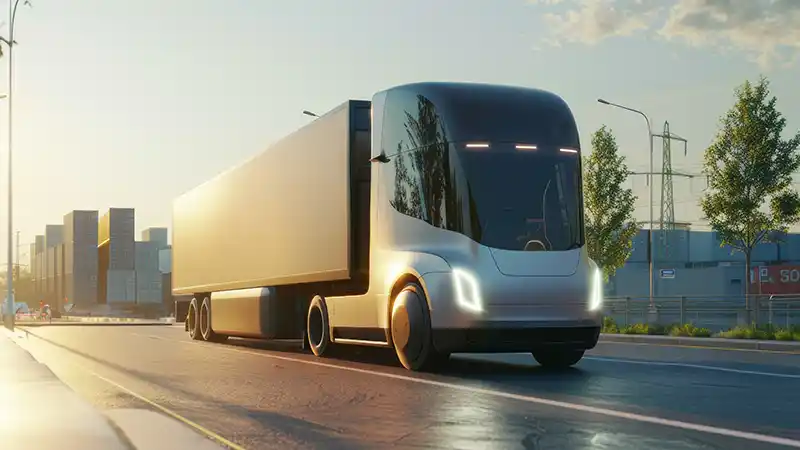On a warm Texas morning in 2025, a white semi-truck emblazoned with the Aurora logo pulls out of a transfer hub near Dallas. As it merges onto I-45, there’s something different about this rig: there’s no one in the driver’s seat. No hands on the wheel, no foot on the pedal, no driver at all. The truck is fully autonomous, piloted by the Aurora Driver system, and it’s on its way to Houston—hauling real freight for a paying customer, with no human backup in the cab.
This is not a test run or a publicity stunt. It’s the start of a new era for American trucking. Aurora’s commercial launch of self-driving semis on one of the country’s busiest freight corridors marks a turning point for logistics, technology, and the future of work in the U.S. The implications ripple far beyond Texas: from how fleets plan routes and manage risk, to how shippers think about reliability and speed, to how drivers, regulators, and communities adapt to a world where trucks drive themselves.
This article explores every facet of Aurora’s breakthrough: the technology powering its trucks, the operational model, the safety protocols, and the broader impact on the U.S. freight market. Through real-world stories, expert analysis, and a close look at the road ahead, discover how Texas is becoming the launchpad for driverless logistics—and what it means for the industry at large.
The Road to Commercial Autonomy
Aurora Innovation didn’t arrive at this moment overnight. Founded by veterans of Google, Uber, and Tesla’s self-driving programs, Aurora spent years developing, testing, and refining its autonomous technology. The company’s approach was methodical: thousands of hours of simulation, millions of miles of supervised highway driving, and a relentless focus on safety and reliability.
The decision to launch in Texas was strategic. The Dallas-Houston corridor is a freight artery, linking two of the state’s largest cities with a straight, high-volume interstate. The state’s regulatory climate is uniquely supportive, offering clear rules for autonomous vehicles and a willingness to partner with industry. The weather is generally favorable for sensor performance, with minimal snow or ice. And the sheer volume of freight, ranging from consumer goods to industrial parts—makes it an ideal proving ground for commercial deployment.
After extensive pilots and close collaboration with state officials, Aurora declared its system ready for the next step: fully driverless, commercial service.
Inside the Aurora Driver: Technology and Safety
At the core of every Aurora truck is the Aurora Driver, a sophisticated blend of hardware and software that enables the vehicle to perceive, plan, and act in real time. The truck’s “eyes” are an array of lidar, radar, and cameras, providing a 360-degree view of the road, other vehicles, and potential obstacles. High-definition maps give the truck centimeter-level knowledge of the highway, including lane markings, exits, and even the location of traffic cones or construction zones.
The “brain” is a suite of AI algorithms, trained on millions of miles of real and simulated driving. These algorithms interpret sensor data, predict the behavior of other road users, and make split-second decisions about speed, lane changes, and emergency maneuvers. If a sensor fails, redundant systems take over. If the truck encounters an unexpected situation, say, a sudden lane closure or a stalled vehicle, it can safely pull over or request remote human assistance.
Aurora’s safety protocols are exhaustive. Every trip is monitored in real time by a remote operations team, who can intervene if needed. The company has worked closely with law enforcement, first responders, and tow operators to develop emergency response plans. Every incident, no matter how minor, is logged, analyzed, and used to refine the system.
Transparency is a pillar of Aurora’s strategy. The company regularly publishes safety data, invites journalists and regulators for ride-alongs, and holds community forums to address questions and concerns. The goal is not just to prove that the technology works, but to build trust with the public, policymakers, and the industry.
Operational Model: Hub-to-Hub Efficiency
Aurora’s commercial service is built around a “hub-to-hub” model. Rather than attempting to navigate the complexities of city streets or last-mile delivery, Aurora’s trucks focus on the long-haul segments where autonomy delivers the greatest value.
Here’s how it works: Freight is loaded onto a self-driving truck at a transfer hub near Dallas. The truck then travels autonomously along I-45 to a corresponding hub near Houston. At the destination, the trailer is offloaded and the truck is prepared for its next run. For last-mile delivery, goods are transferred to local, human-driven trucks or handled by partners specializing in urban logistics.
This model maximizes the efficiency, safety, and reliability of autonomous technology. By limiting operations to highways and controlled environments, Aurora can avoid many of the unpredictable challenges of city driving. The result is a service that’s fast, scalable, and ready for real-world freight demands.
Shipper and Fleet Benefits: Speed, Predictability, and Scale
For shippers, Aurora’s launch promises a step-change in reliability and speed. Without the constraints of human hours-of-service limits, trucks can run nearly 24/7, slashing delivery times and increasing supply chain flexibility. Predictable, on-time arrivals become the norm, not the exception.
Fleets see similar advantages. Asset utilization skyrockets when trucks aren’t sitting idle during driver rest breaks or shift changes. Labor costs and turnover risk decline, allowing companies to redeploy drivers to local or specialized routes where human skills are most valuable. Maintenance schedules can be optimized using real-time vehicle health data, reducing breakdowns and unexpected downtime.
Aurora’s partnerships with major shippers and logistics providers, including FedEx, Uber Freight, and Werner Enterprises—underscore the industry’s appetite for innovation. Early results show high on-time rates, low incident frequency, and positive feedback from customers.
Challenges and Controversies
No technological leap comes without challenges. Aurora’s launch has sparked debate on several fronts.
The most visible is workforce impact. Unions and driver advocates worry that widespread adoption of autonomous trucks could erode wages, reduce job security, and displace thousands of drivers. Aurora and its partners argue that new jobs will be created in fleet management, technology support, and transfer hub operations, but acknowledge that the transition will be disruptive for some.
Regulatory uncertainty is another hurdle. While Texas has embraced autonomy, other states have stricter rules or outright bans on driverless trucks. The lack of national standards complicates expansion and raises questions about interstate operations. Aurora is actively engaging with federal and state regulators to shape policy and advocate for harmonized rules.
Safety and public perception remain ongoing concerns. Every incident involving an autonomous vehicle is scrutinized by the media and regulators. Aurora knows that maintaining a near-flawless safety record is essential for building and sustaining public trust.
Finally, infrastructure presents a challenge. Autonomous trucks require investment in digital infrastructure, such as high-definition mapping and 5G connectivity, as well as physical upgrades to transfer hubs, rest stops, and fueling or charging stations.
The Broader Impact: Logistics, Technology, and Competition
Aurora’s launch is sending shockwaves through the logistics industry. Rival companies like Waymo Via, Kodiak Robotics, and TuSimple are racing to expand their own operations in Texas and beyond. The competitive pressure is driving rapid innovation, pushing down costs, and accelerating adoption.
For technology providers, Aurora’s success validates years of investment in AI, sensor fusion, and systems integration. It also sets a benchmark for safety and operational excellence that others must match or exceed.
For the logistics sector, the move to autonomy is forcing a rethink of business models, route planning, and customer service. Transfer hubs, remote operations centers, and “freight as a service” offerings are emerging as new pillars of the industry.
Looking Ahead: The Future of Long-Haul Freight
Aurora’s breakthrough is just the beginning. As technology matures and regulations adapt, autonomous trucks are expected to handle an increasing share of long-haul freight, especially on major corridors. Expansion to new routes, larger fleets, and integration with electric vehicles and platooning systems are all on the horizon.
Most experts predict a gradual transition. Human drivers will remain essential for local, regional, and specialized routes, as well as for handling complex deliveries and customer service. Fleets that invest in automation, safety, and service will be best positioned to thrive in the new landscape.
For the industry as a whole, the message is clear: automation is here to stay. The companies, fleets, and drivers that adapt will lead the next era of American freight.
Conclusion
Aurora’s self-driving semis on Texas highways mark a turning point for freight logistics. By proving that autonomous trucks can operate safely, efficiently, and commercially at scale, Aurora is setting the stage for a new era in the movement of goods. The road ahead will have challenges, but the direction is clear: automation is here to stay, and those who adapt will lead the industry into the future.











